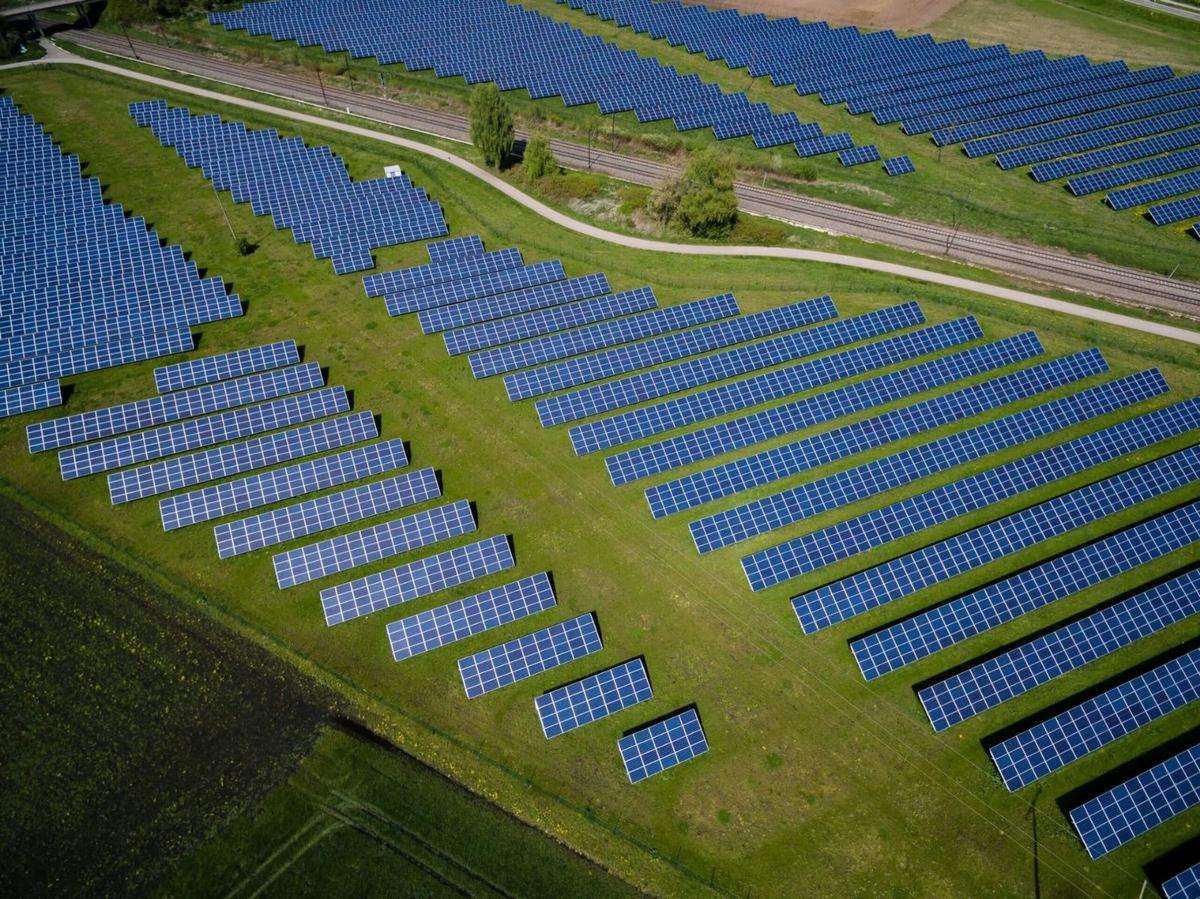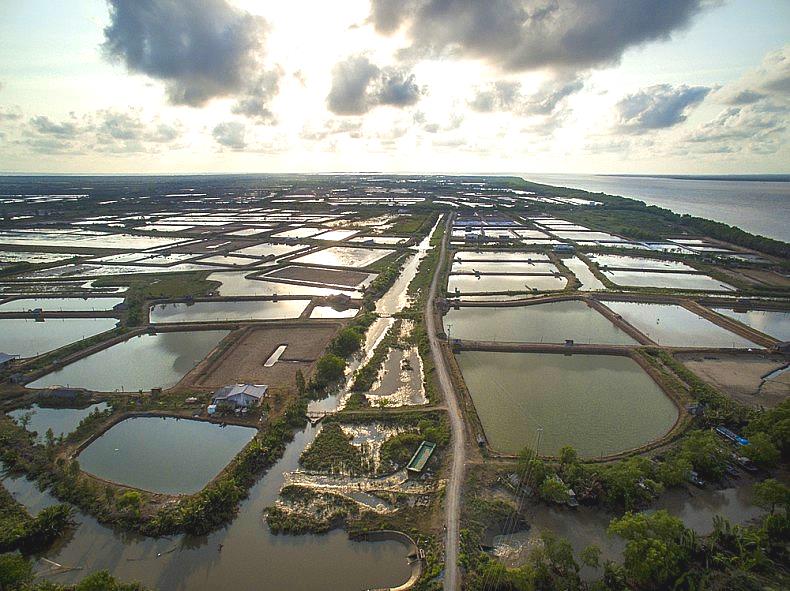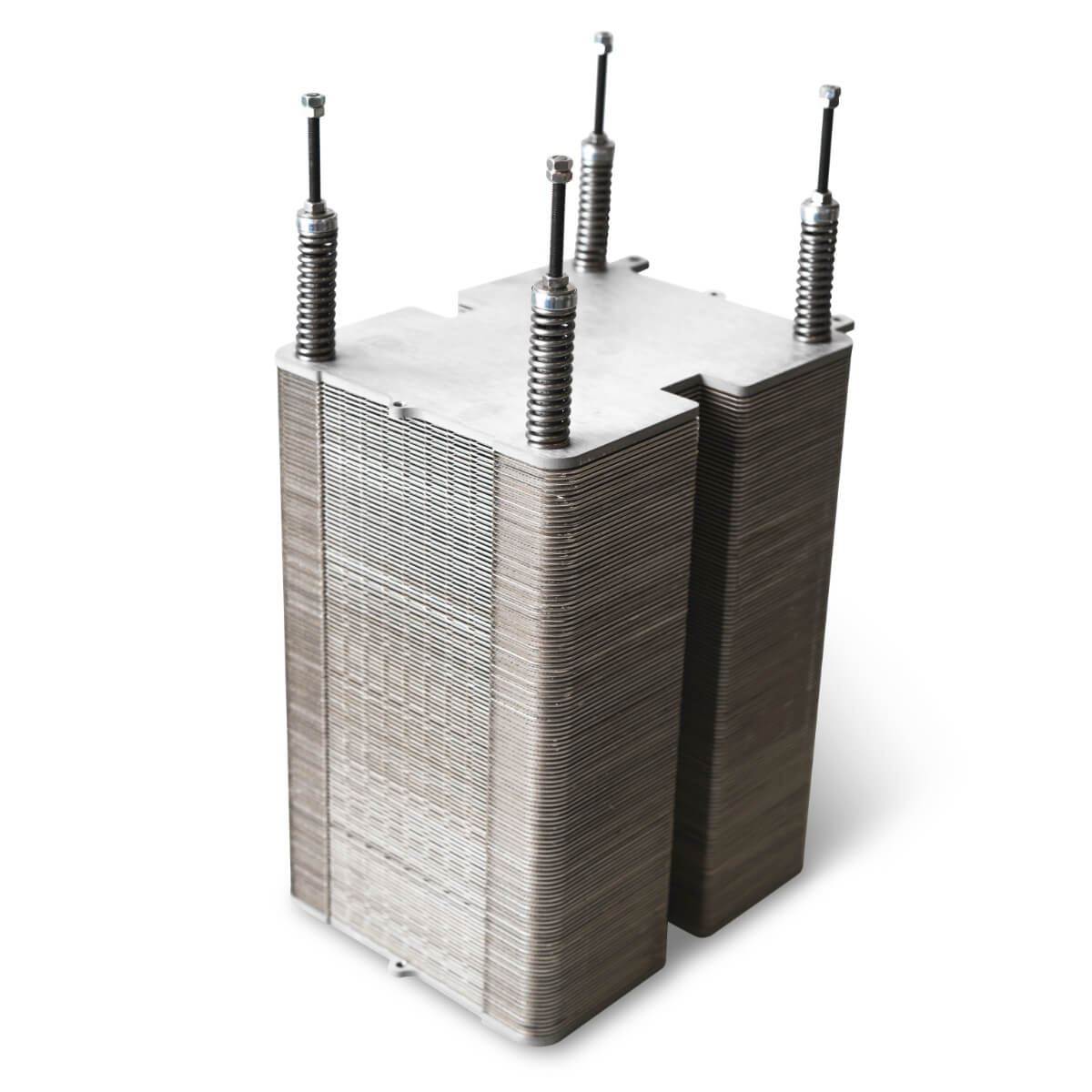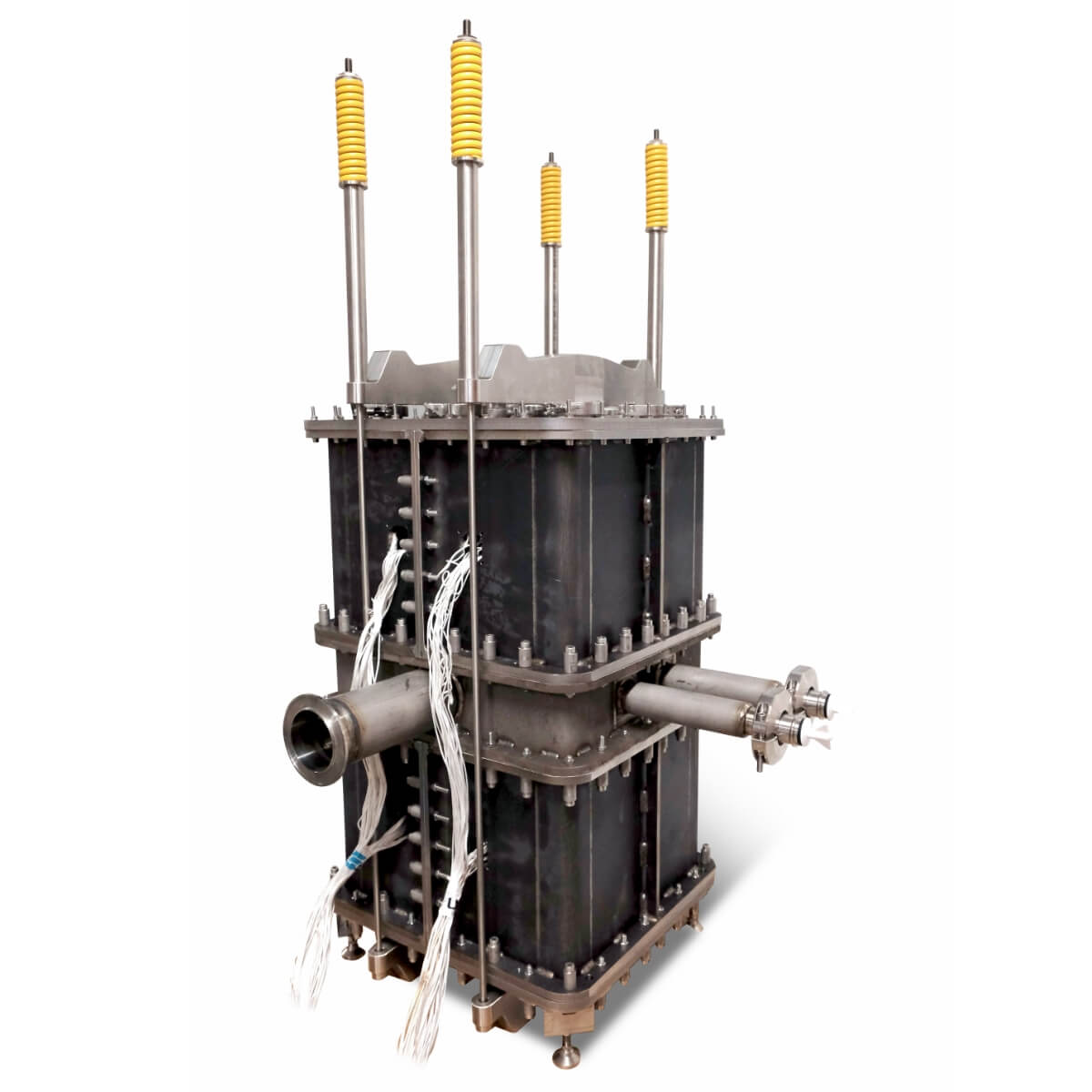The water is split on the cathode side, generating H2 and O2- ions. The negatively charged oxygen ions move to the anode side which then loses electrons (after recombination to O2) that return through an external load to the electron deficient cathode side, requiring an external power source (e.g., renewable energy).
Due to the endothermal electrochemical process and water evaporation, the reaction requires external heat that can be produced by a simple electrical resistance or taken from nearby industrial heat sources. Also, the process can be designed as a thermoneutral selecting right operating voltage/current parameters due to heat created by the cell itself.
; ?>)
; ?>)


